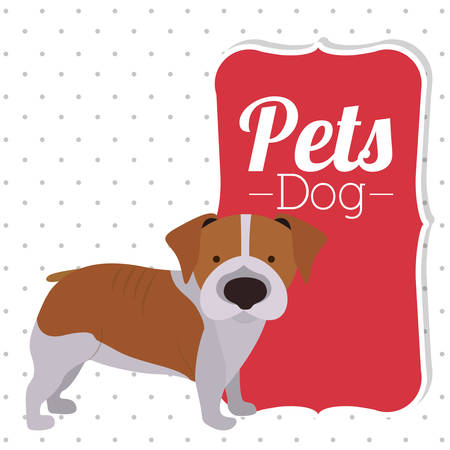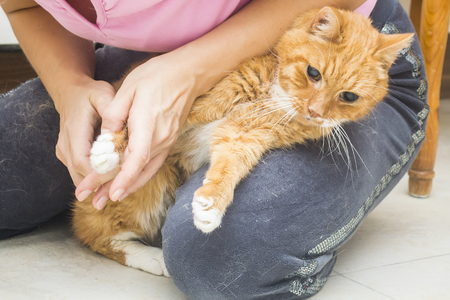1. Understanding Digestive Blockages in Exotic Pets
Digestive blockages, also known as gastrointestinal obstructions, happen when something blocks the normal flow of food and fluids through an animal’s digestive tract. While these problems can occur in any pet, they are especially concerning in exotic pets due to their unique diets, anatomy, and care requirements.
What Are Digestive Blockages?
A digestive blockage occurs when a foreign object, compacted material, or abnormal growth prevents the movement of food or waste through the intestines. This can lead to pain, severe illness, or even life-threatening complications if not treated promptly. In exotic pets, these issues may be harder to spot because many species hide signs of illness until things get serious.
Which Exotic Pets Are Most at Risk?
| Type of Exotic Pet | Common Causes of Blockage |
|---|---|
| Rabbits & Guinea Pigs | Hairballs (trichobezoars), improper diet, foreign objects |
| Birds (Parrots, Cockatiels) | Ingesting bedding, toys, seeds with shells |
| Reptiles (Bearded Dragons, Snakes) | Substrate ingestion (sand, gravel), undigested prey, dehydration |
| Ferrets | Chewing and swallowing rubber, foam, or fabric objects |
| Pocket Pets (Hamsters, Gerbils) | Bedding material, seeds with shells |
Why Are Digestive Blockages More Complicated in Exotics?
Caring for exotic pets is quite different from caring for dogs and cats. Exotic species often have delicate digestive systems and specific dietary needs. Their smaller size means that even a small blockage can cause big problems fast. Additionally, exotics are experts at hiding discomfort or pain, making it challenging for owners to notice symptoms early on.
Key Reasons for Complexity:
- Anatomy Differences: Many exotics have specialized digestive tracts that react differently to blockages than traditional pets.
- Sensitivity to Stress: Exotic animals often become stressed easily during illness or handling, which can worsen their condition.
- Lack of Early Warning Signs: Subtle changes in appetite or behavior might be the only clues before the problem becomes severe.
- Difficult Diagnosis: Vets often need advanced imaging or special expertise to diagnose blockages in these species.
If you have an exotic pet at home, knowing the basics about digestive blockages is essential for keeping them safe and healthy.
Common Causes of Digestive Blockages
Digestive blockages are a serious health concern for exotic pets like reptiles, birds, small mammals, and amphibians. Understanding the most common causes can help pet owners spot problems early and prevent emergencies.
Dietary Indiscretion
One of the top reasons exotic pets develop digestive blockages is eating things they shouldnt. Some species are naturally curious or have a strong drive to chew or taste new objects. This behavior can lead them to eat bedding, toys, or household items that their digestive systems cant handle.
Foreign Object Ingestion
Many exotic pets accidentally swallow items from their environment. For example, ferrets may chew on rubber toys, while birds might nibble on jewelry or fabric. These foreign objects can get stuck in the digestive tract and cause dangerous blockages.
Inappropriate Substrate
Certain types of bedding or substrate used in cages or enclosures can pose a risk if ingested. Some common substrates that can cause issues include sand, wood shavings, gravel, and corn cob bedding. Pets like reptiles and rodents often accidentally eat substrate when theyre feeding or exploring.
Examples of Risky Substrates
| Substrate Type | Pet Species at Risk | Potential Problems |
|---|---|---|
| Sand | Lizards (bearded dragons, geckos) | Impaction, severe constipation |
| Corn Cob Bedding | Small mammals (hamsters, rats) | Blockages, mold growth |
| Wood Shavings | Rabbits, rodents | Toxicity, digestive upset |
| Gravel/Aquarium Stones | Turtles, amphibians | Obstruction of intestines |
Species-Specific Risks
Certain exotic pets are more likely to suffer from digestive blockages because of their natural behaviors and anatomy. Here are some examples:
- Ferrets: Love to chew rubber or foam objects which can get lodged in their gut.
- Birds: Sometimes eat fabric fibers or string from toys and cage accessories.
- Lizards: May eat loose substrate by accident while hunting live food.
- Turtles: Can swallow rocks or gravel from their tanks.
- Rabbits and Guinea Pigs: Prone to hairball blockages from grooming themselves too much.
Quick Reference: Common Causes by Species
| Pet Type | Main Cause of Blockage |
|---|---|
| Lizards | Eating sand/substrate while feeding |
| Birds | Nibbling on fabric, string, or metal objects |
| Ferrets | Chewing and swallowing rubber/plastic items |
| Turtles & Amphibians | Swallowing gravel or stones in habitat |
| Rabbits/Guinea Pigs | Hairballs from excessive grooming |
Knowing what puts your exotic pet at risk helps you create a safer environment and react quickly if you notice signs of trouble.

3. Recognizing Symptoms of Digestive Trouble
Spotting digestive blockages in exotic pets early can make all the difference. Since our scaly, feathered, or furry friends cant tell us when somethings wrong, its important to watch for changes in their physical appearance and behavior. Here are some key symptoms that may signal a digestive issue:
Physical and Behavioral Signs to Watch For
| Symptom | What to Look For |
|---|---|
| Lack of Appetite | Your pet suddenly refuses food or shows less interest in treats and meals. |
| Lethargy | Your usually active pet seems tired, sluggish, or spends more time hiding or sleeping. |
| Vomiting or Regurgitation | You notice your pet throwing up food, water, or other materials. (More common in some reptiles and birds than others.) |
| Abnormal Droppings | Droppings look different—maybe smaller, fewer, misshapen, unusually colored, or missing altogether. |
| Changes in Activity Level | Your pet stops playing, exploring, or interacting as usual. They might seem uncomfortable or restless. |
Why These Signs Matter
These symptoms can develop slowly or come on fast. Any sudden change from your pet’s normal habits should be taken seriously. Exotic animals often hide signs of illness until they are very sick—so if you see any combination of these signs, it’s smart to call your exotic vet right away.
4. When to Seek Emergency Care
If you suspect your exotic pet may have a digestive blockage, recognizing when it’s time to rush to the vet can save their life. Some signs are red flags that mean you shouldn’t wait and hope things get better on their own. Knowing what to look for and how to act quickly is key.
Red-Flag Symptoms That Need Immediate Veterinary Attention
| Symptom | Why It’s an Emergency |
|---|---|
| Severe or Persistent Vomiting | Could indicate complete blockage; risk of dehydration and shock. |
| Bloated or Painful Abdomen | Pain or swelling may mean the digestive tract is obstructed or twisted. |
| Lethargy or Unresponsiveness | Lack of energy signals possible systemic infection or severe pain. |
| No Stool Passed for 24+ Hours (or unusual droppings) | Absence of feces often means nothing is moving through the intestines. |
| Labored Breathing | A swollen abdomen can press against lungs, making it hard to breathe. |
| Sudden Collapse or Seizures | May indicate shock from toxins, organ failure, or severe pain. |
How to Identify an Emergency Situation
- Monitor Behavior: Exotic pets often hide illness until they are very sick. Any sudden change in behavior—especially hiding, refusing food, or not moving—should be taken seriously.
- Check Eating and Pooping Habits: If your pet stops eating or you notice a lack of droppings, this could be a sign of a serious problem.
- Watch for Physical Changes: Swelling, visible pain when touched, or an unusual posture (like hunching) are warning signs.
- Act Fast: If you see any of the symptoms in the table above, call your exotic animal vet right away. Don’t try home remedies unless advised by a professional.
- Have Contact Info Ready: Keep your vet’s phone number and address handy. Know where the nearest emergency clinic that sees exotic animals is located.
If You’re Unsure, Call Your Vet
If you notice anything off but aren’t sure if it’s an emergency, it’s always safer to contact your veterinarian. Quick action can make all the difference for your pet’s recovery and comfort.
5. Emergency Procedures and Home Care Tips
What to Expect During a Vet Visit for Suspected Digestive Blockage
If you suspect your exotic pet—such as a rabbit, ferret, bird, or reptile—may have a digestive blockage, immediate veterinary attention is crucial. Here’s what typically happens during the visit:
| Step | What Happens |
|---|---|
| Initial Assessment | The vet will ask about your pets recent behavior, appetite, stool habits, and any vomiting or lethargy. |
| Physical Exam | Your pet will be gently examined for pain, bloating, dehydration, or abnormal sounds in the abdomen. |
| Diagnostics | Depending on your pet’s species and symptoms, the vet may recommend X-rays, ultrasound, or bloodwork to locate and identify the blockage. |
| Treatment Discussion | The vet will explain treatment options based on findings. This could include fluids, medications, or in severe cases, surgery. |
Common Diagnostic and Treatment Approaches
Diagnostic Tools
- X-rays: Help visualize foreign objects or areas where food isn’t moving properly.
- Ultrasound: Provides detailed images of soft tissues and possible blockages.
- Blood Tests: Check for dehydration or organ stress caused by the blockage.
Treatment Options
- Fluid Therapy: Rehydrates your pet and may help move minor blockages.
- Medications: Pain relievers, anti-nausea meds, or motility drugs might be used for mild cases.
- Surgery: In severe cases (especially if a foreign object is causing the obstruction), surgical removal may be necessary.
- Nutritional Support: Some pets need special diets after treatment to recover gut health.
Safe Steps for Owners at Home Before and During Transport
If you think your exotic pet has a blockage, here are some dos and don’ts while you prepare for the vet visit:
| Do | Don’t |
|---|---|
| Keep your pet calm and warm—stress can make symptoms worse. | Do not try to feed or force water if your pet is vomiting or refusing food. |
| Place small mammals in a secure carrier with soft bedding. | Avoid giving over-the-counter medications meant for humans or other animals. |
| If safe to do so, collect a sample of vomit or stool for the vet. | Avoid handling reptiles or birds excessively; minimize movement to reduce stress. |
| If instructed by your vet, monitor breathing and alertness closely during transport. | Do not delay veterinary care—blockages can become life-threatening very quickly! |
Helpful Tips for Transporting Your Exotic Pet
- Use a well-ventilated carrier: Ensure it is escape-proof and lined with absorbent material.
- Avoid temperature extremes: Keep pets out of direct sunlight or cold drafts during travel.
- No food or water en route unless directed by your vet: Especially important if surgery may be needed soon.
- Call ahead: Let your veterinary clinic know you’re coming so they can prepare for an emergency case.
If you notice any sudden changes in your exotic pet’s behavior—such as straining to defecate, lack of appetite, or signs of pain—it’s always best to act fast and consult with an experienced exotics veterinarian right away. Prompt action can make all the difference in their recovery!


